Welcome to our free classical music site

Do you write about classical music? Are you a blogger? Want to team up with Classical Connect? Send us a message, let's talk!

Do you write about classical music? Are you a blogger? Want to team up with Classical Connect? Send us a message, let's talk!
This Week in Classical Music: June 5, 2023. Schumann and much more. First thing, today is Martha Argerich’s 82nd birthday. Happy Birthday, Martha!
Then there are two conductors, Klaus Tennstedt and George Szell. Szell, born on June 7th of 1897, is considered one of the greatest conductors of the 20th century. We published an entry about him a couple of years ago. Klaus Tennstedt was born on June 6th of 1926 in Merseburg, in the eastern part of Germany which, after WWII, became the GDR. He studied at the Leipzig Conservatory and, in 1958, became the director of the Dresden opera. Tennstedt emigrated from East Germany in 1971. First, he settled in Sweden, where he conducted the Swedish Radio Symphony Orchestra but a year later moved to West Germany. Tennstedt guest-conducted all major US orchestras and many in Europe, including the Berlin Philharmonic and the Concertgebouw. He was closely associated with two London orchestras, the London Symphony, and London Philharmonic. He became the principal conductor of the latter in 1987. Tennstedt’s interpretations of the music of Mahler were highly acclaimed. Here is the majestic Finale of Mahler’s Symphony no. 3 with the London Philharmonic.
And let’s not forget about Gaetano Berenstadt, a favorite alto-castrato of George Frideric Handel. He was born in Florence on June 6th of 1687. His parents were German, serving at the court of the Duke of Tuscany. Berenstadt first appeared in London in 1717, singing in the operas by Handel, Scarlatti and Ariosti. He then moved to Germany and back to Italy, returning to London in 1722 to join Handel’s Royal Academy of Music. He sang in several of Handel’s operas, including Giulio Cesare, Flavio, and Ottone. Berenstadt returned to Italy for good in 1726; he sang in Rome and Florence for another six years. In bad health for the last few years, he died in Florence at the age of 47.Permalink
This Week in Classical Music: May 29, 2023. Warmly, but without much enthusiasm. Erich Wolfgang Korngold was born on this day in 1897. A child prodigy, he had a fascinating, and in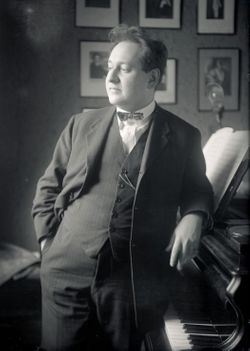 many ways difficult life that spanned several epochs. He was born in Brünn, Austria-Hungary, now Brno, the Czech Republic, at the end of the Empire’s culturally brilliant era, which was open enough to allow the assimilated Jews to flourish. A child prodigy, he was a darling of Vienna, where the family moved when Erich was four. His father, Julius Korngold, was the most prominent music critic of the time, working for the newspaper Neue Freie Presse, the New York Times of Vienna. Erich’s first piano sonata was composed at the age of 11; another piano and a violin sonata followed shortly after, then a Sinfonietta and a couple of short operas. World War I ended with the disappearance of Austria-Hungary, and Vienna, the capital of a world power and a cultural center of the world turned into a provincial Middle-European city. Korngold, by then in his early 20s, turned to the opera. Die Tote Stadt (The Dead City), composed in 1920 when Korngold was 23, was a tremendous success and staged all over Germany, then Europe, even reaching the Met two years later. In the meantime, Korngold turned to writing and arranging operettas. They were very popular and brought in quite a bit of money. His father, whose idol was Gustav Mahler and who didn’t care much for operettas, wasn’t pleased, considering this a waste of his son’s talent. In retrospect, the technique of writing lighter music with lots of words thrown in became an asset when Erich earned money in Hollywood writing music scores some years later.
many ways difficult life that spanned several epochs. He was born in Brünn, Austria-Hungary, now Brno, the Czech Republic, at the end of the Empire’s culturally brilliant era, which was open enough to allow the assimilated Jews to flourish. A child prodigy, he was a darling of Vienna, where the family moved when Erich was four. His father, Julius Korngold, was the most prominent music critic of the time, working for the newspaper Neue Freie Presse, the New York Times of Vienna. Erich’s first piano sonata was composed at the age of 11; another piano and a violin sonata followed shortly after, then a Sinfonietta and a couple of short operas. World War I ended with the disappearance of Austria-Hungary, and Vienna, the capital of a world power and a cultural center of the world turned into a provincial Middle-European city. Korngold, by then in his early 20s, turned to the opera. Die Tote Stadt (The Dead City), composed in 1920 when Korngold was 23, was a tremendous success and staged all over Germany, then Europe, even reaching the Met two years later. In the meantime, Korngold turned to writing and arranging operettas. They were very popular and brought in quite a bit of money. His father, whose idol was Gustav Mahler and who didn’t care much for operettas, wasn’t pleased, considering this a waste of his son’s talent. In retrospect, the technique of writing lighter music with lots of words thrown in became an asset when Erich earned money in Hollywood writing music scores some years later.
In 1933 the Nazis came to power in Germany and banned Korngold’s music in that country (after the Anschluss, it would be banned in Austria too). In 1934, an invitation from Max Reinhardt, the famous German theater director, who was then working in New York theaters and trying his hand at film, brought Korngold to Hollywood. Nobody in the US was much interested in Korngold’s more “serious” music but his career in the movies took off. He wrote music for some of the most popular films of the 1930s, such as Captain Blood, The Adventures of Robin Hood, and many others, singlehandedly creating a new musical genre. He did write some “serious” music as well, but not much of it: the Violin Concerto in 1945 and a large-scale symphony in 1947, which used themes from his 1939 film The Private Lives of Elizabeth and Essex. These works are romantic, flowery, and pretty, but they sound rather dated – and, not surprisingly, remind one of his film music. We’re afraid that we agree with Julius Korngold that Erich, with all his obvious talents and tremendous promise, didn’t go “deep” enough. But maybe it was just inherently not in his nature: if you listen to his Sinfonietta, composed when Erich was 16, you can already hear the theatricality of Robin Hood.
Marin Marais was born on June 1st of 1653 in Paris. A student of Jean-Baptiste Lully, he became famous after the film Tous les matins du monde, featuring his music, premiered in 1991. We find most of it repetitive and not very imaginative (somehow the repetitious phrases in the music of Padre Antonio Soler work much better).
Mikhail Glinka, also born on June 1st but in 1804, is widely considered the father of Russian classical music and to that extent, is important. And Edward Elgar was born on June 2nd of 1857. He’s one of the most significant English composers of the modern era, but we’ve already confessed to being rather cool to his music, the Cello concerto in the interpretation of Jacqueline du Pré notwithstanding.Permalink
This Week in Classical Music: May 22, 2023. Wagner. These days when one says “Wagner” the first assumption is that the person is talking about the Russian military group fighting in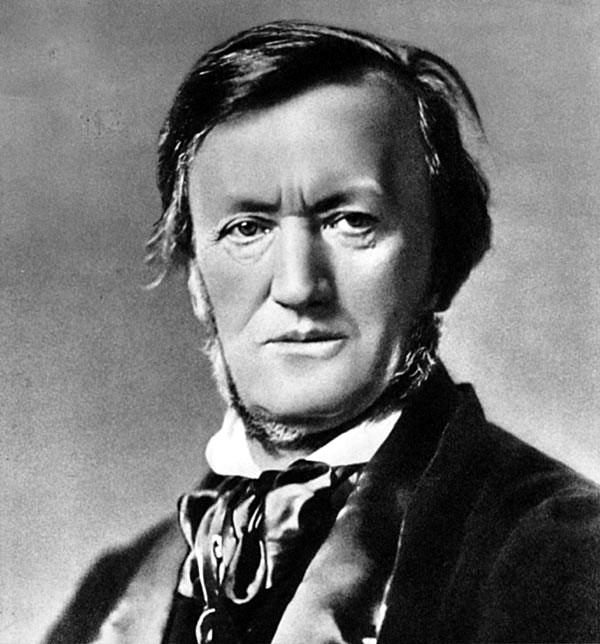 Ukraine on behalf of the Russian government. The image of the great German composer comes in second. It is not clear why the Russian nationalistic paramilitary organization took such a Western name. As one theory goes, the original founder of the organization, one Dmitry Utkin, a neo-Nazi interested in the history of the Third Reich, took the call sign of Wagner, after Richard Wagner, Adolph Hitler’s favorite composer. This is almost too much: Richard Wagner had enough problems of his own doing to be associated with this murderous group.
Ukraine on behalf of the Russian government. The image of the great German composer comes in second. It is not clear why the Russian nationalistic paramilitary organization took such a Western name. As one theory goes, the original founder of the organization, one Dmitry Utkin, a neo-Nazi interested in the history of the Third Reich, took the call sign of Wagner, after Richard Wagner, Adolph Hitler’s favorite composer. This is almost too much: Richard Wagner had enough problems of his own doing to be associated with this murderous group.
Richard Wagner was born on May 22nd of 1813 in Leipzig. That he is a composer of genius goes without saying. That he was a rabid and active antisemite is also very clear. This gets us into a very complicated predicament: what do we do about an evil genius? Do we ignore all the “extraneous” biographical facts and just concentrate on the quality of his music? Or do we, as the Israelis have done, ban his music altogether? We don’t have an answer. A litmus test, suggested by some thinkers, goes like this: if the aspects of the creator’s philosophy, in this case, his antisemitism, have directly affected his works, then we cannot ignore them. If, on the other hand, they did not, then maybe we should concentrate on the work itself and ignore the rest while letting biographers dig into the sordid details. Even given this test we don’t quite know how to qualify Wagner’s work. Wagner’s writings are full of antisemitism, but clearly, they are not what he’s famous for – there were too many antisemites in Germany during his time. His opera Die Meistersinger von Nürnberg has a whiff of antisemitism while most other operas are free of it. We’re not going to solve this problem today, so just to confirm that we’re talking about a flawed genius, let’s listen to the Prelude to Act I of Parsifal, Wagner’s last opera. This is from the 1972 recording made by Sir Georg Solti and the Vienna Philharmonic Orchestra. This amazing recording also features René Kollo, Dietrich Fischer-Dieskau and Christa Ludwig, all at the top of their form. Wagner prohibited any performances of Parsifal outside of Bayreuth, and that’s how it was for the first 20 years after the premiere. Even though Wagner died in 1883, his widow Cosima, Liszt’s daughter and also an antisemite, wouldn’t allow any other staging. Then, in 1903, a court decided that the Metropolitan Opera could perform Parsifal in New York. Cosima banned all singers who participated in that performance from ever appearing in Bayreuth. Only in 1914 was the ban lifted and immediately 50 opera houses presented it all over Europe. Since then, Parsifal has remained on the stage of all major opera theaters around the world.
PermalinkThis Week in Classical Music: May 15, 2023. Monteverdi and Goldmark. One of our all-time favorite composers, Claudio Monteverdi, was born (or at least baptized) in Cremona on this day in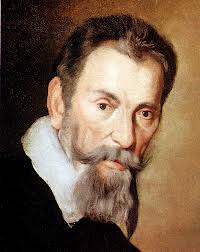 1567. A seminal figure in European music history, he spanned two traditions, the old, Renaissance, and the new, Baroque, and in the process created the new art of opera. We’ve written about him many times, so today we’ll just present one section, Laudate pueri, from his Vespro della Beata Vergine (Vespers for the Blessed Virgin), also known as his 1610 Vespers. Monteverdi composed the Vespers while in Mantua, at the court of the Gonzagas. It was published in Venice and dedicated to Pope Paul V, famous for his friendship and support of Galileo Galilei (but also for nepotism: he made his nephew, Cardinal Scipione Borghese so rich that it allowed Scipione to start what is now known as the Borghese Collection of paintings and sculptures). Back to the music, though: here is Laudate pueri, performed by the British ensemble The Sixteen under the direction of their founder, Harry Christophers.
1567. A seminal figure in European music history, he spanned two traditions, the old, Renaissance, and the new, Baroque, and in the process created the new art of opera. We’ve written about him many times, so today we’ll just present one section, Laudate pueri, from his Vespro della Beata Vergine (Vespers for the Blessed Virgin), also known as his 1610 Vespers. Monteverdi composed the Vespers while in Mantua, at the court of the Gonzagas. It was published in Venice and dedicated to Pope Paul V, famous for his friendship and support of Galileo Galilei (but also for nepotism: he made his nephew, Cardinal Scipione Borghese so rich that it allowed Scipione to start what is now known as the Borghese Collection of paintings and sculptures). Back to the music, though: here is Laudate pueri, performed by the British ensemble The Sixteen under the direction of their founder, Harry Christophers.
Carl Goldmark is almost forgotten, but in his day, he was one of the most popular composers in the German-speaking world. His opera Die Königin von Saba (The Queen of Sheba) was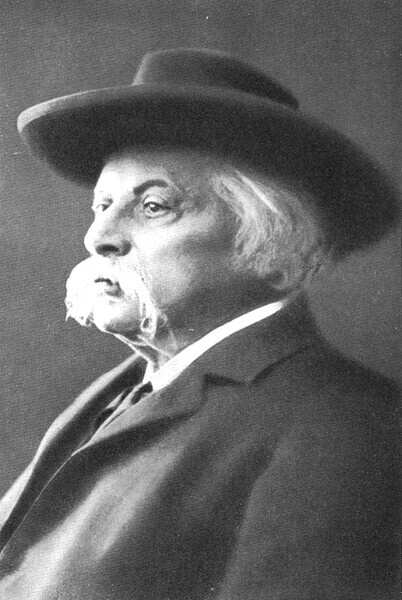 performed continuously from the day it successfully premiered in 1875 in Vienna’s Hofoper, till 1938, when Austria was taken over by the Nazis in the so-called Anschluss. Goldmark was born on May 18th of 1830 in Keszthely, a Hungarian town in the Austro-Hungarian Empire. Goldmark was Jewish (his father was a cantor in the local synagogue); the family came from Galicia, and Goldmark’s first language was Yiddish – he never spoke Hungarian and learned German as a teenager. Goldmark studied the violin in Vienna and later supported himself by playing the instrument in various local orchestras. Around this time, he accepted the German culture as his own, which was the path for many upwardly mobile Jews in Austria and Germany in the second half of the 19th century. Around 1862 he became friends with Johannes Brahms, who had recently moved to Vienna from Hamburg. Goldmark’s first successful composition was a concert overture Sakuntala, based on the Indian epic Mahabharata, which premiered in 1865. Goldmark followed it with another exotic composition, the above-mentioned opera Die Königin von Saba. It was a spectacular success and performances of the opera were mounted internationally. Goldmark became part of the establishment, receiving prizes and honors, and presiding over important musical juries. His 70th and 80th birthdays were celebrated nationally with great pomp. He helped Mahler get his appointment at the Court Opera in 1897; some years later, he did a similar favor to Arnold Schoenberg, who was seeking an appointment to the Imperial Academy of Music and Arts. Goldmark died several months into WWI, grieving the loss of his grandchild who was killed in one of the first actions in Serbia.
performed continuously from the day it successfully premiered in 1875 in Vienna’s Hofoper, till 1938, when Austria was taken over by the Nazis in the so-called Anschluss. Goldmark was born on May 18th of 1830 in Keszthely, a Hungarian town in the Austro-Hungarian Empire. Goldmark was Jewish (his father was a cantor in the local synagogue); the family came from Galicia, and Goldmark’s first language was Yiddish – he never spoke Hungarian and learned German as a teenager. Goldmark studied the violin in Vienna and later supported himself by playing the instrument in various local orchestras. Around this time, he accepted the German culture as his own, which was the path for many upwardly mobile Jews in Austria and Germany in the second half of the 19th century. Around 1862 he became friends with Johannes Brahms, who had recently moved to Vienna from Hamburg. Goldmark’s first successful composition was a concert overture Sakuntala, based on the Indian epic Mahabharata, which premiered in 1865. Goldmark followed it with another exotic composition, the above-mentioned opera Die Königin von Saba. It was a spectacular success and performances of the opera were mounted internationally. Goldmark became part of the establishment, receiving prizes and honors, and presiding over important musical juries. His 70th and 80th birthdays were celebrated nationally with great pomp. He helped Mahler get his appointment at the Court Opera in 1897; some years later, he did a similar favor to Arnold Schoenberg, who was seeking an appointment to the Imperial Academy of Music and Arts. Goldmark died several months into WWI, grieving the loss of his grandchild who was killed in one of the first actions in Serbia.
Goldmark’s Violin Concerto no. 1 was composed in 1877. It’s a wonderful composition, rarely performed these days. Here is a marvelous recording made by Nathan Milstein in 1957. Harry Blech conducts the Philharmonia Orchestra. We wonder why it’s not being played more often.Permalink
This Week in Classical Music: May 8, 2023. A Listless List. A whole bunch of composers were born this week, and none of them inspire us. This may change with time: many of our.jpg) musical attachments ebb and flow. Let’s list the more interesting names: two Frenchmen, born on the same day, May 12th, three years apart: Jules Massenet in 1842 and Gabriel Fauré in 1845. Massenet is famous (or at least known) for his operas; two of them, Manon and Werther, are staged often. His most popular piece, though, is not vocal: it is Meditation, from his opera Thaïs, for the violin and orchestra. Here it is played by Mischa Elman, at his Russian Romantic best. While Massenet was rather conservative, Fauré, was forward-looking and influenced many composers of the early 20th century. Here is Fauré’s Pavane, performed by the Berlin Philharmonic under the baton of Simon Rattle.
musical attachments ebb and flow. Let’s list the more interesting names: two Frenchmen, born on the same day, May 12th, three years apart: Jules Massenet in 1842 and Gabriel Fauré in 1845. Massenet is famous (or at least known) for his operas; two of them, Manon and Werther, are staged often. His most popular piece, though, is not vocal: it is Meditation, from his opera Thaïs, for the violin and orchestra. Here it is played by Mischa Elman, at his Russian Romantic best. While Massenet was rather conservative, Fauré, was forward-looking and influenced many composers of the early 20th century. Here is Fauré’s Pavane, performed by the Berlin Philharmonic under the baton of Simon Rattle.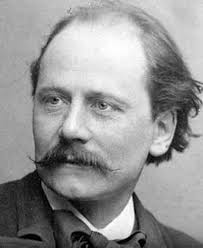
Carl Stamitz, the eldest son of Johann Stamitz, both prominent representatives of the Mannheim School, was baptized on May 8th of 1745. The American composer and pianist, Louis Moreau Gottschalk was born on that day in 1829 in New Orleans. Even if his music is mostly forgotten, his life was fascinating, and we’ll return to him someday. Giovanni Battista Viotti, an Italian violin virtuoso and composer, was born on May 12th of 1755. Viotti composed 29 violin concertos, some of them still in the active repertory, but we didn’t have a single piece of his in our library. We’re correcting the omission with this performance of his Violin concerto no. 22 with the wonderful Belgian-Romanian violinist Lola Bobesco. Kurt Redel conducts the Staatsphilharmonie Rheinland-Pfalz orchestra. Another Italian, Giovanni Paisiello, was born on May 9th of 1740. His most popular opera was Il Barbiere di Siviglia, composed in 1782 with the libretto adapted from Beaumarchais’s play, as was Rossini’s famous masterpiece, written some 36 years later.
Milton Babbitt was one of the most interesting (and difficult) American composers of the 20th century, and we wrote about him here. And speaking of fascinating lives, Arthur Lourié’s certainly was: he was linked, romantically or otherwise, with a good part of the Russian Silver Age artists, from the poet Anna Akhmatova to the painter Sudeikin, to Stravinsky and Vera de Bosset, Stravinsky’s eventual wife. Some of these relationships were rather unconventional; we’ve touched upon them here.
Two conductors were also born this week, Carlo Maria Giulini, on May 9th of 1914, and Otto Klemperer, on May 14th of 1895. Giulini, together with Arturo Toscanini, Victor de Sabata, and Claudio Abbado, was one of the few truly great Italian conductors (we probably should add Giuseppe Sinopoli and Riccardo Muti to the list). During his long career (he died at the age of 91) Giulini was closely associated with the Chicago Symphony Orchestra, London's Philharmonia, the Vienna Philharmonic, and sever other major ensembles. The number of prominent German 20th-century conductors is much larger, and Otto Klemperer was always considered one of the best. We wrote about him recently here. An interesting note: Giulini’s first instrument was the viola, and as a young man, he played in the orchestra of the Accademia di Santa Cecilia in Rome. Among the conductors whose music-making affected him the most were the Germans: Wilhelm Furtwängler, Bruno Walter – and Klemperer.Permalink
This Week in Classical Music: May 1, 2023. Pfitzner, Double Birthday and Alessandro Scarlatti. The German composer Hans Pfitzner was born in, of all places, Moscow, Russia, on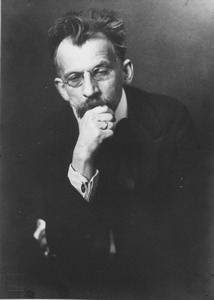 May 5th of 1869. We wanted to write about him not because of his talent but because of the period he lived in, the one preceding the 1933 Nazi takeover and then the Nazi period in Germany and later Austria. We find this time frame of Austro-German music fascinating. Never before were music and politics as intertwined as then and there, and never in modern times were the ethics of the musicians tested to the same degree. Then it occurred to us that just two weeks ago we wrote about Max von Schillings, whose path was somewhat similar to Pfitzner’s. So, we decided to return to Pfitzner at a later date. Pfitzner was a better composer and not as rabid a Nazi supporter as Schillings, so we feel that we can play some of his music. Here are Three Preludes from his most successful opera, “Palestrina” (preludes to Acts I, II, and III). Christian Thielemann conducts the orchestra of the Deutsche Oper Berlin.
May 5th of 1869. We wanted to write about him not because of his talent but because of the period he lived in, the one preceding the 1933 Nazi takeover and then the Nazi period in Germany and later Austria. We find this time frame of Austro-German music fascinating. Never before were music and politics as intertwined as then and there, and never in modern times were the ethics of the musicians tested to the same degree. Then it occurred to us that just two weeks ago we wrote about Max von Schillings, whose path was somewhat similar to Pfitzner’s. So, we decided to return to Pfitzner at a later date. Pfitzner was a better composer and not as rabid a Nazi supporter as Schillings, so we feel that we can play some of his music. Here are Three Preludes from his most successful opera, “Palestrina” (preludes to Acts I, II, and III). Christian Thielemann conducts the orchestra of the Deutsche Oper Berlin.
May 7th is special: Pyotr Tchaikovsky and Johannes Brahms were both born on this day, Tchaikovsky in 1840 and Brahms seven years earlier, in 1833. This is a rather unfortunate coincidence as both of them deserve separate entries. On the other hand, we’ve written so many entries about these composers, together and separately, that we’ll skip them this time.
These days Alessandro Scarlatti’s son Domenico is much better known than his father, but we think this is a purely technical issue: Alessandro was famous for his operas whereas Domenico – for his small clavier sonatas. It’s much easier to squeeze a three-minute piano piece into a recital or as a filler on a classical music radio station than stage a three-hour opera production. Scarlatti composed 65 operas, most of them in three acts. The exceptions being the famous (or as famous as Alessandro Scarlatti’s opera can get), Il Mitridate Eupatore, and Il trionfo della libertà are in five acts; both composed in 1707. Of all of his operas, probably five have been recorded (his oratorios fared a little bit better; Scarlatti wrote more than 30 of them, and being shorter, they are easier to produce). Alessandro Scarlatti was born on May 2nd of 1660 in Palermo. He spent most of his time in Rome and Naples and is considered “the father” of the Neapolitan opera. Even though opera was his favorite art form, he also wrote some church and orchestral music. We can listen to two examples: here’s his short (just five minutes) Concerto Grosso no. 4, performed by the ensemble Europa Galante under the direction of Fabio Biondi. It was composed around 1715. And here is Kyrie, from his St. Cecilia Mass (1720). The Wren orchestra, the choir of St. John’s College, Cambridge, and the soloists are led by George Guest.Permalink